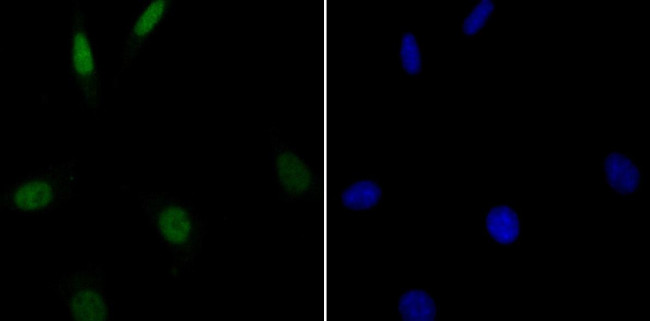Search Thermo Fisher Scientific
FIGURE: 1 / 10
GPR30 Antibody (PA5-109319) in ICC/IF



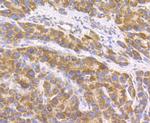
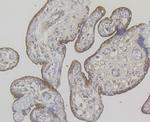
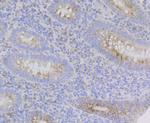
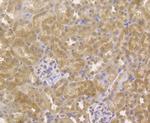
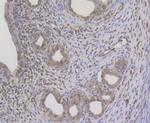
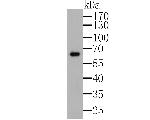
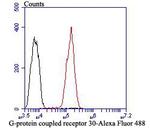
Product Details
PA5-109319
Species Reactivity
Host/Isotype
Class
Type
Immunogen
Conjugate
Form
Concentration
Purification
Storage buffer
Contains
Storage conditions
Shipping conditions
RRID
Product Specific Information
Positive Control: Lovo, HepG2, MG-63, SH-SY-5Y, rat uterus tissue, human liver cancer tissue, human appendix tissue, human placenta tissue, mouse kidney tissue.
Target Information
This gene is a member of the G-protein coupled receptor 1 family and encodes a multi-pass membrane protein that localizes to the endoplasmic reticulum. The protein binds estrogen, resulting in intracellular calcium mobilization and synthesis of phosphatidylinositol 3,4,5-trisphosphate in the nucleus. This protein therefore plays a role in the rapid nongenomic signaling events widely observed following stimulation of cells and tissues with estrogen. Alternate transcriptional splice variants which encode the same protein have been characterized.
For Research Use Only. Not for use in diagnostic procedures. Not for resale without express authorization.
References (0)
Bioinformatics
Protein Aliases: Chemoattractant receptor-like 2; chemokine receptor-like 2; constitutively expressed peptide-like receptor; FEG-1; Flow-induced endothelial G-protein coupled receptor 1; G protein-coupled estrogen receptor 1; G protein-coupled receptor 30; G-protein coupled estrogen receptor 1; G-protein coupled receptor 30; GPCR-Br; heptahelix receptor; IL8-related receptor DRY12; leucine rich protein in GPR30 3'UTR; LYGPR; Lymphocyte-derived G-protein coupled receptor; Membrane estrogen receptor; mER
Gene Aliases: CEPR; CMKRL2; DRY12; FEG-1; GPCR-Br; GPER; GPER1; GPR30; LERGU; LERGU2; LyGPR; mER
UniProt ID: (Human) Q99527
Entrez Gene ID: (Human) 2852

Performance Guarantee
If an Invitrogen™ antibody doesn't perform as described on our website or datasheet,we'll replace the product at no cost to you, or provide you with a credit for a future purchase.*
Learn more
We're here to help
Get expert recommendations for common problems or connect directly with an on staff expert for technical assistance related to applications, equipment and general product use.
Contact tech support
